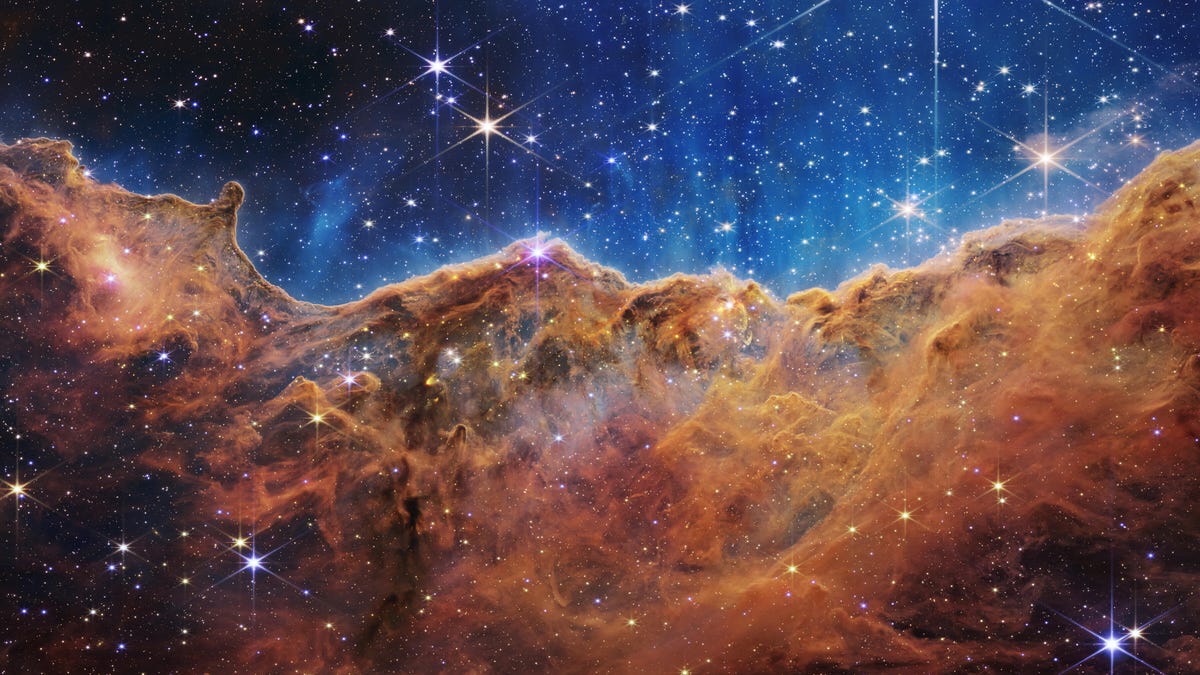Hear Images From NASA's James Webb Telescope Turned Into Haunting Music
There are many ways to observe the universe.

The Carina Nebula becomes a haunting soundscape through data sonification.
There's been much fanfare around the first image and data releases from NASA's next-gen James Webb Space Telescope. On Wednesday, the agency gave space fans a new way to experience Webb's observations with a series of soundscapes.
The tracks -- including translations of images of the Carina Nebula and the Southern Ring Nebula -- use sonification to turn imagery and data into audio experiences. "Music taps into our emotional centers," said musician Matt Russo, a physics professor at the University of Toronto who worked on the project. "Our goal is to make Webb's images and data understandable through sound -- helping listeners create their own mental images."
The "Cosmic Cliffs" of the Carina Nebula, a stunning celestial object full of stars, gas and dust, becomes a sparkling, symphonic palate of sound. The gas and dust have drone-like tones. The orange and red lower part of the image is melodic. Points of bright light are higher in tone.
The Southern Ring Nebula takes on an eerie sound, like experimental electronic music made in a tunnel with string players tuning up. This sonification comes in two parts to represent the different infrared observations Webb made of the nebula. The bright stars make distinct noises, like plucked piano strings.
It's not just images the team of scientists and musicians turned into audio. Webb's data on the atmosphere of gas giant exoplanet WASP-96 b became a sci-fi-esque soundscape filled with descending tones and an effect like dripping water. Those droplets represent water signatures in the atmosphere.
The sonifications bring a new dimension to Webb's discoveries, and they make the telescope's work more accessible to blind and low-vision space enthusiasts. "When I first heard a sonification, it struck me in a visceral, emotional way that I imagine sighted people experience when they look up at the night sky," said Christine Malec, a member of the blind and low-vision community who worked on the Webb sound project.
The Webb audio experiences are both otherworldly and familiar. They show there are broader ways to explore the cosmos beyond what we can see with our eyes.

